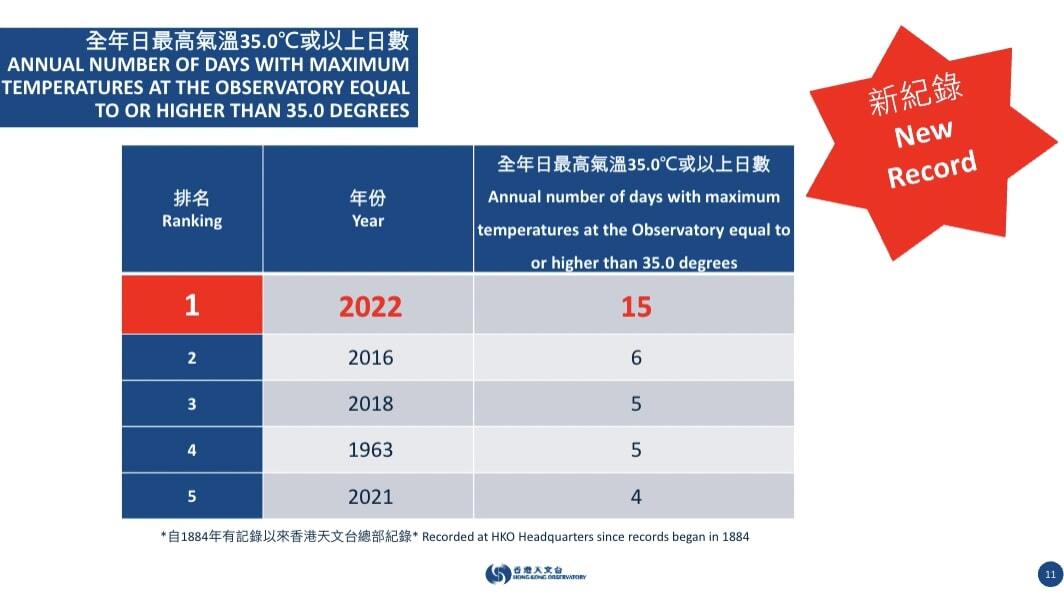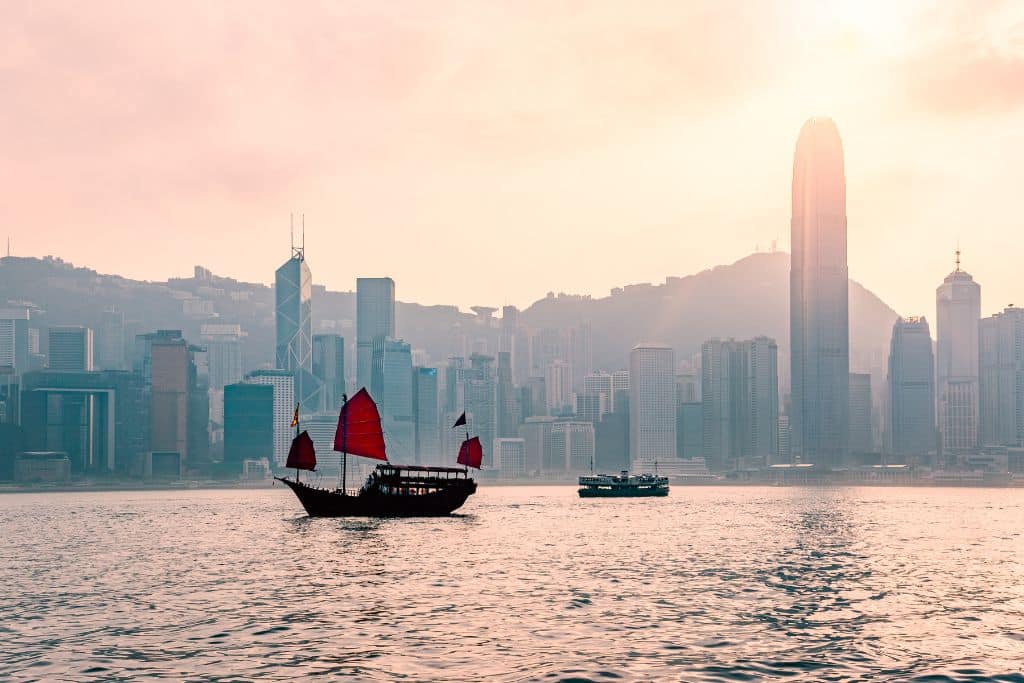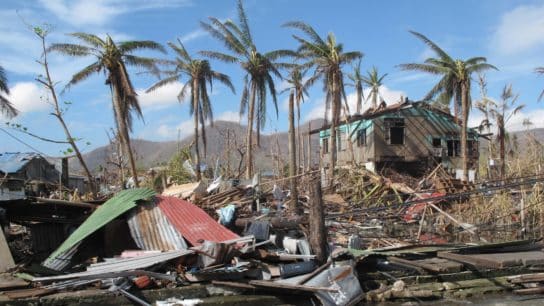Ten years ago, a giant inflatable duck spent two weeks floating in Hong Kong’s Victoria Harbour and garnered international attention. On June 10, 2023, the iconic duck made its comeback with a twist – it brought an identical twin. Hundreds of people flock to the harbour to see the exhibition, which also explains their disappointment when one of the ducks was deflated due to the sizzling weather. While this issue may seem trivial at first glance, it addresses the dark reality of Hong Kong’s changing climate.
—
Extreme Heat Disrupts Hong Kong’s ‘Double Duck’ Exhibition
Inspired by bathtub rubber duck toys, Dutch artist Florentijn Hofman embarked on his international journey of showcasing his giant duck sculpture for the first time in 2007. The exhibited duck floated across cities including Sydney, Osaka, and Amsterdam.
On May 2, 2013, the rubber duck made its first appearance on Hong Kong waters, attracting an estimated eight million visitors. In June 2023, the ducks returned to Hong Kong to celebrate the 10-year anniversary of their last visit to the city. The public art exhibition ‘Double Ducks’, featuring twin 18-metre (59-feet) inflatable ducks, was unveiled to the public last week.

One of two giant rubber ducks by Dutch artist Florentijn Hofman deflates in Hong Kong’s Victoria Harbour, on June 10, 2023. Photo: Tom Grundy/HKFP.
Much to citizens’ dismay, one of the ducks got deflated a day after its debut due to concerns over the city’s high temperatures. As spectators watched the duck melt into a yellow puddle, one question arose: How hot has Hong Kong become?
Hong Kong’s Changing Climate
As summer begins in the city, citizens are warned almost on a daily basis to seek shelter from the intense heat. Last month, the Hong Kong Observatory (HKO) issued the first “very hot weather” alert of the year after recording a temperature of 33C in some districts.
Unfortunately, the heat has grown alarmingly familiar to Hong Kong residents. According to the HKO, 2022 is among Hong Kong’s six warmest years since the record began in 1884, with an annual mean temperature of 23.9C, while 2021 tops the charts with 24.6C.
Furthermore, 2022 recorded the most number of days with maximum temperatures of 35C and higher. There were 15 days of maximum temperatures, more than double the second-highest number recorded in 2016.

2022 had the most number of days with temperatures of 35C and higher. Image: Hong Kong Observatory.
The Effects of the Extreme Heat
Experts predict that the territory will experience climate change not only through accelerating temperatures but also from rising sea levels and destructive typhoons. However, recent data reveals that Hong Kong’s climate is already changing.
A 2018 research warns that the city’s sea level is set to rise anywhere between 0.63-1.07 metres by the end of the current century.
This is particularly worrying for a densely populated coastal city like Hong Kong. Soaring sea levels have great potential to wreak havoc among low-lying and coastal areas, threatening the livelihoods of nearby citizens through intense floods.
Although Hong Kong is no stranger to chaotic tropical cyclones, the intensity of future typhoons is projected to be unusually stronger. The degree of destruction is likely to exceed that of Typhoon Manghkut in 2018, the most violent typhoon recorded in the city. It left 450 people injured and resulted in a staggering HK$4.6 billion (US$587 million) in economic losses.
How Is Hong Kong Handling the Heat?
The Conference of Parties (COP) of The United Nations Framework Convention of Climate Change (UNFCCC) is held yearly to spark productive conversations about climate change. The last time Hong Kong participated in the annual climate summit was in 2017, when then-environment secretary Wong Kam-sing joined the Chinese delegation at COP23 in Bonn, Germany.
The most notorious summit was COP21 in 2015, which resulted in the establishment of the Paris Agreement that involves 194 member regions, including China. The Agreement sets out a framework for limiting global warming to below 1.5C or ‘well below 2C’ above pre-industrial levels by the end of the century.
Nonetheless, a 2022 United Nations report found that, despite pledges and commitments from governments around the world to cap global warming, the world is on track to exceed the feared 2C mark by 2030. According to the scientists behind the study, the planet will heat up between 2.1C and 2.9C by the end of the century compared to pre-industrial levels, even though emissions are expected to effectively stop increasing after 2030.
On the bright side, in the 2021 policy address, the Hong Kong government pledged to allocate HK$240 billion (US$20 billion) over the next 15 to 20 years to alleviate the climate crisis. The city also aims to go carbon neutral before 2050 through several steps, including eliminating the use of coal for daily electricity generation.
Beating the Heat
While all of this sounds promising, having large funds is futile when there is a lack of precise and achievable goals.
Achieving carbon neutrality before 2050 is extremely ambitious, and it should instead be translated into a network of short-term strategies. For example, the government could sequentially focus on assisting different districts’ reduction of electricity consumption.
Aside from focusing on preventive measures, the territory should also prepare to tackle emergencies. Experts are encouraging the government to have an in-depth assessment of a worst-case scenario during extreme weather. It shall identify areas that are prone to experience the severe effects of climate change and generate feasible solutions accordingly.
Most importantly, the current administration should be more involved in environmental discussions. Active involvement sparks motivation for its own citizens, prompting collective action. This is especially critical for a city driven by unhealthy consumer habits that yield plastic pollution.
Of course, environmental actions are not limited to government groups. Ordinary citizens can participate by reducing and segregating their waste, avoiding environmentally unfriendly corporations, and minimising plastic use.
Ironically, the deflated yellow duck in Victoria Harbour serves as a dreadful reminder to us about our plastic footprint – how our mounting waste will eventually hover on sea surfaces.
Hofman explained that the public exhibition is “not about looking into the past but enjoying the moment together”.
Although we should focus on the present, it is also important to consider the future. From adopting eco-friendly habits to spreading awareness, we have to think about what we can do today to safeguard the possibility of having a greener and better tomorrow.
You might also like: 6 Biggest Environmental Issues in Hong Kong in 2023














